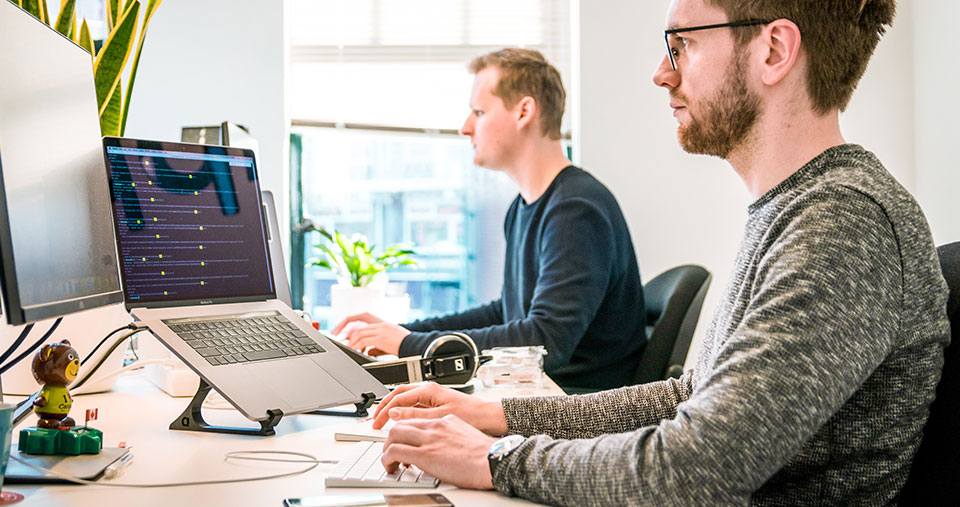
Authors: Martin Mark Palmisano, Paolo Vincenzo Ciannamea
Intro
IE3 is an EU Erasmus+ project aiming at assessing the gap between industry needs and the Master Level Academic Programs offered by European Universities.
Within the project partners, we can find Polytechnic University of Bari (Poliba) – Italy and Bosch.
Thanks to this partnership, I had the chance to go for an internship experience at Bosch as student of the Industrial Engineering and Management program offered by Poliba.
Usually, these kind of experiences last six months and the target is to work on a project that is then combined with the master degree final project (thesis).
The potential of such an experience is, without any doubt, impactful on the student educational path.
In my case, I did not choose to combine the internship with the final project: I assumed that having the chance of a job experience at Bosch could give me even more if I saw things from the point of view of an actual employee. This way, the root purpose of this decision was not “getting the thesis done” but “the need to learn as much as I could as I were an actual member of the company”.
Even though it might appear counterintuitive at first, this different approach disrupted the level of the experience I lived. The insider point of view gave me the chance to see closer the company approach and working aligned with the company vision rather than just my personal thesis target.
Vision: a direction giver for a sense of purpose
Everything started with the Lean Production module as part of my MSc. The intended teaching is to provide the student with the body of knowledge of the lean practices in manufacturing. At Bosch, the management approach is called BPS (Bosch Production System).
Its aim is to continually improve all the processes, achieving the order fulfilment, designing them lean and waste-free.
Where to start with a so ambitious goal? The first thing the approach states is a vision. When I sensed these topics from the student point of view, I was somewhat skeptical at first because it is not a quantitative target, as engineers are used to, but a broad description of a desired condition. What made me doubtful was the fact that this description was about an unachievable state. For me it was like looking at the stars and pretending that they were reachable. Only later, with the practical experience I sensed the impact over the environment. In a context where different people have to collaborate toward a common state, a vision is what gives a sense of direction, which is the reason why humans started looking at the stars. It does not matter if something is not reachable now, or the path is unknown, what truly matters is to come up with actions aligned with a sense of purpose. Of course, these actions will not be enough to reach the desired state, but they will reduce the gap or teach us how to do so. The purpose of the company is to put everyone in the position of avoid firefighting and become participative actor of the continuous improvement process: if we can offer to someone the chance to switch from just implementation mode to the full use of their capabilities, we can definitely unleash people’ potential.
Meaning of “Improver”
During my experience at Bosch, I heard one the greatest definition of “Improver”. First thing first, the perspective is different from the widely used “Problem Solver”. I imagine the Problem Solver as someone who is put in front of a problem and has to solve it. An “Improver” is someone that consciously faces something that it might look to be working properly, but challenges it to do better.
In that occasion, I was struggling with implementing solutions for my project and my tutor told me: “the gap between an ideal state and the actual working state of the system is why we exist. Our task is to reduce this gap with the optimal solution available. See, I did not say “best” but optimal. The “best” solution is a concept and trying to implement it is equal to trying to draw a perfect circle on chalkboard. That is why it is called “optimization” and not “bestimization”. We are means that creates symbiosis between theory and actual state. Do not be crestfallen when you hear “practice is different” because we already know that it is different. Rather, think that the system would not even exist without us or it would need us to be working, in any case. Our responsibility is to learn from errors and to perform better next.”
The experience helped me to understand that is not to build a system without any deviation at all, but assume the deviation as an opportunity to understand what prevents the system to work as we deside, fully understand the root cause and just at the of this cycle implement a solution to reduce the gap with the target condition. I do not mean that we are right if we continually face failures. We also need success as confirmation of our hypothesis, but as Kipling says in “If”:
If you can meet with Triumph and Disaster
and treat those two impostors just the same…
An individual who gets comfortable with this mindset puts theirself in the position of unleash full potential without feeling daunted by the unknown.
In Manufacturing, improvers usually seize the opportunity given by the error occurrence because the aim is to create a waste-free environment.

